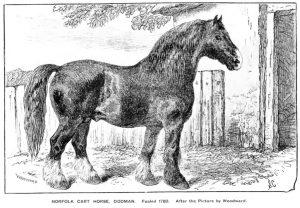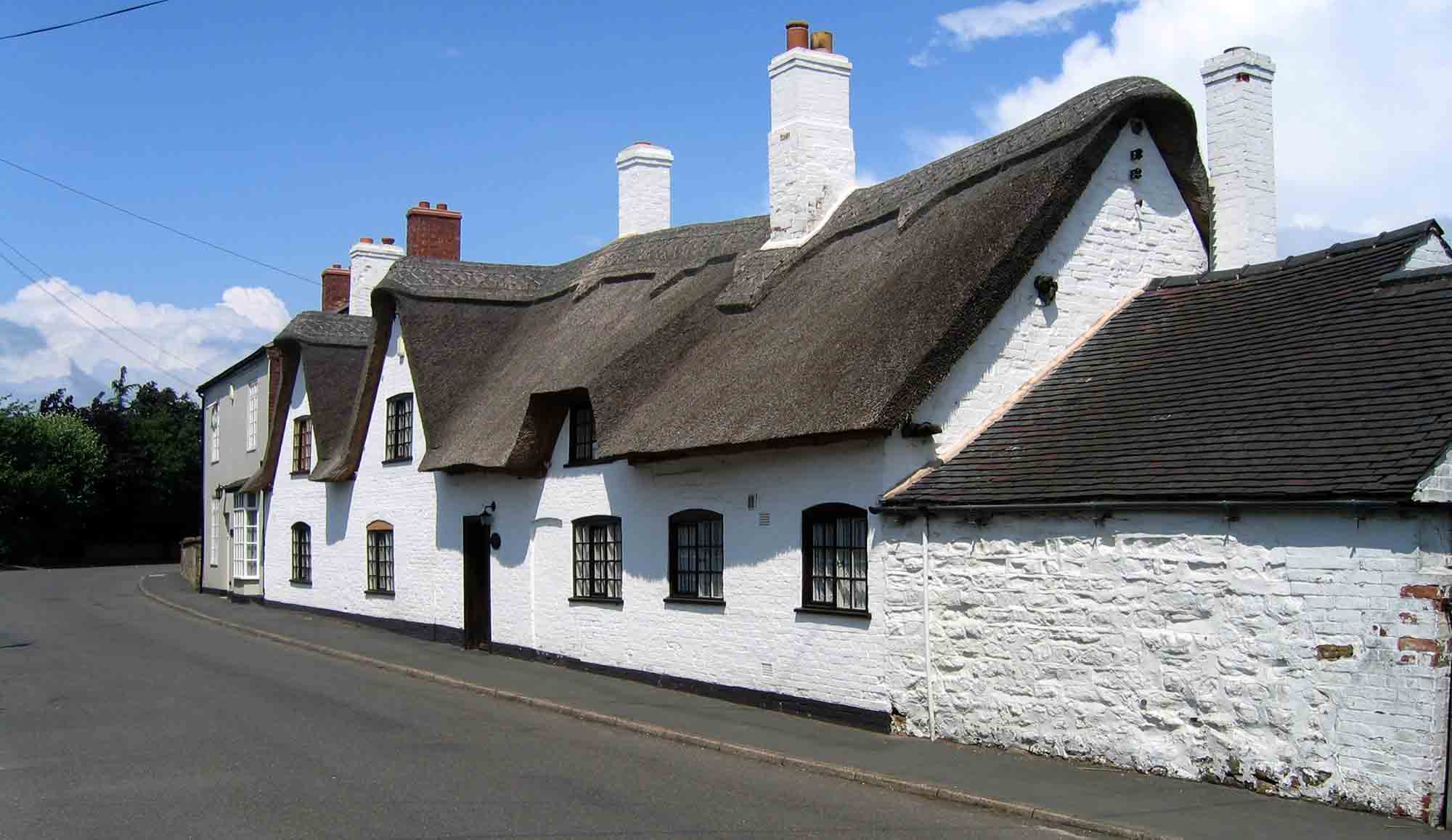
The following paragraphs appeared in Packington Post Issues 67 and 68, describing a famous blind horse from our village that is believed to have effectively founded the Shire Horse breed. At the end of our extract below, you can download FREE the source text from the printed book of 1899.
Foundation Stallion for the Shire Breed

The term “Shire horse” was first used in the mid-17th century, and incomplete records begin to appear near the end of the 18th century.
The “Packington Blind Horse”, from Leicestershire, is one of the best- known horses of the era, with direct descendants being recorded from 1755 to 1832.
This horse is usually recognised as the foundation stallion for the Shire breed, and he stood at stud from 1755 to 1770. He was black and appears in the first Shire Stud Book because of the large number of horses claimed to be descended from him.
The English Shire Horse, & The Shire Horse Society

The English Cart Horse Society was founded in 1876 and published the first stud book 2 years later. In 1884 it changed its name to the Shire Horse Society. At this time the Shire horse was still very much a work horse, but was being shown extensively, the fierce competition resulting in improving the breed further.
The Shire had a huge following including King George V. His stallion, Field Marshall V, won the London Show twice before going on to be one of the most influential sires of his time. The Shire again played an important part in the 1st & 2nd World Wars, pulling the heavy artillery.
After the 2nd world War with the improvement in mechanism the Shire was no longer needed in either industry or agriculture and in the 1950’s was nearly doomed to extinction. Numbers of horses (including Shires) used for agriculture including mares for breeding fell dramatically from 550,000 in 1939 to only 5,000 on 1972. The subsequent revival of the Shire owes much to a few determined breeders & exhibitors and Breweries using them for short haul work and promotions.
The Shire Horse
“They are magnificent in appearance: majestic in movement; mild mannered in temperament. They are the Shire horses, the tallest and heaviest breed of horse in the world.”
Shires are reputed to be the most docile of the draught breeds. How many are there? Where are they found? To answer these questions, and many others, we must start at the beginning. The breed certainly has a colourful history, ranging from a much-needed animal, to the brink of extinction.
A Noble Beginning
The history of the Shire horse is hard to pin down. The year 1068 seems to be a good starting point when tracing its background. The terms ’War Horse’ or ’Great Horse’ come to mind when speaking of the Shire. It was then mentioned as being used as a pack animal. It is believed, by many, to be the breed that carried knights into battle. Most Shire people accept that today’s horse is indeed descended from the heavy cob type of about 15.2 hands used in the armies of King Henry II. It stands to reason that for horses to carry a fully armoured knight weighing in excess of four hundred pounds into battle, an animal with great strength and yet a calm temperament would be required.

These two characteristics are not lost on today’s Shire. Whether for use as a ‘Cart Horse’, as they were also known during this period in history, or as a ‘War Horse’, ‘a hundred stallions of large stature’ were imported to England from the lowlands of Flanders, Holland, and the banks of the Elbe, from 1199 to 1216. It is from this blending, over seven hundred years ago, of these animals with the English breed, that some strains, at least, of our heavy draught horses must be said to date their origin.
It was during the reign of Henry VIII that acts to prohibit the breeding of horses under 15 hands were passed, and that the name ‘shire’ as applied to the horse was first used in these statutes. The name came from the Saxon word ‘schyran’ which means to shear, or divide, hence the name shire, which is synonymous with County. Thus it is the Counties, or ‘Shires’, of the Midlands in England, namely Derbyshire, Leicestershire, and Staffordshire, that the horse hails from.
Source Material freely available:

The Great Horse or The Shire Horse by Sir Walter Gilbey published 1899 from the Internet Archive.
You can search for “Packington Blind Horse” in this book.
This post for Packington Village History Group PVHG is made by Robert Dilworth in May 2019

Hello, I am a student studying the Shire horse ancestors for a project with an Equine online College. Would it be possible to get permission to use, in my own words, the content of this invaluable Shire horse history and pictures?
I would be very grateful if it were possible 🙂
Regards
Shelley Newton-Carter
Scotland